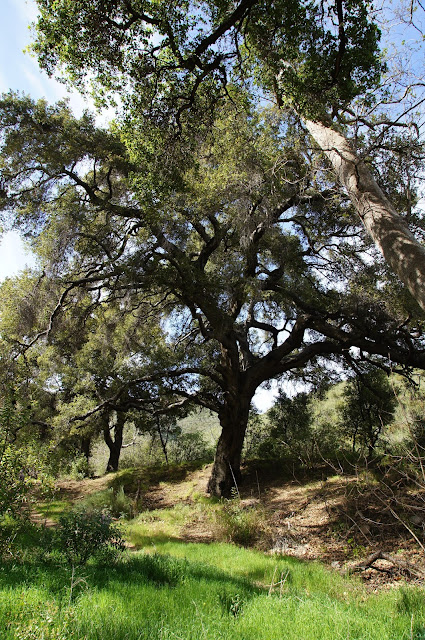Date: March 4, 2013
Place: Solstice Canyon, Malibu, California
Coordinates: 34.03778, -118.74764
Length: to the waterfall and back, about 2.5 miles.
Difficulty: easy
Last March a close friend of mine came to visit me from overseas. On the first weekend of her stay we drove to Los Angeles to visit mutual friends who live there. Here I have a little confession to make, as well as an apology. For all the years we lived in California, we Quails avoided visiting Los Angeles. For numerous reasons, the topmost being the image we had in our minds of a largely cemented area with very little nature to see.
On our short visit to LA we were proven wrong. Very wrong indeed. There is much lovely nature in LA and vicinity still, which I'm eager to go back to and explore to a greater extent.
On our first day there, our friend took us to Solstice Canyon, in the Santa Monica National Recreation Area. Just off Hwy 1 in Malibu.
Still, being in a largely urban area, and it being a weekend, there were quite a few people there and finding a parking place was somewhat challenging. After some waiting by the creek we started our hike.
The trail is sloping gently up along the creek. Large, majestic oaks grow alongside.
And where there are oaks, one can expect to see acorn woodpeckers:
 |
| Acorn Woodpecker |
It is easier to see their larders, they are completely stationary:
 |
| Woodpecker's storage |
The lower part of the trail is wide and paved. After crossing the creek is turns to gravel, but is still wide and comfortable.
Alongside the trail grew these bushes with strong and very sweet smelling flowers. We stepped off the trail for a closer look (and sniffing).
 |
| Greenbark Ceanothus (Ceanothus spinosus) |
On the north side of the trail loomed an impressive rocky cliff. It was only when we were on our way back that our host revealed the existence of a loop trail that goes up to these rocks. Something for the next visit, I guess :-)
Sometimes it's a rock formation. Some times it's a funny-looking tree. Any unusual sight can give me inspiration. Here is the 'brain' root:
The trail leads all the way to the Matthew Keller House. This house, built by a local land owner who used the creek's water and is considered to be the oldest structure in Malibu. At 1952 the Fred Robert's Ranch was built on the grounds and destroyed by fire on 1982.
 |
| The Tropical Terrace: the remains of Fred Robert's ranch that was burnt on 1982. |
The trail curves behind the relics and climbs to a little pool.
 |
| A thrashing moth making ripples in the pool (we did pull it out). |
The pool is fed by a tiny and refreshing waterfall:
We spent a good time sitting by the waterfall. Our host explained about the history of the place and tantalized me with stories of other trails in the area.
Eventually it was time to go back. We returned on the same trail. My friend stopped to photographed everything blooming. I followed suit.
 |
| Clematis lasiantha |
I admit, I have a weakness for roses.
 |
| Wild California Rose (Rosa californica) |
Papa Quail was busy with his camera too. Of all the birds we've seen on that trail, this one, the Black-hooded Parakeet, stood out:
 |
| Black-hooded Parakeet |
There used to be one species of native parakeet, the
Carolina Parakeet, in the United States. Sadly, that species was hunted to extinction. All parrots now found in the wild in the US, including the Black-hooded Parakeet, originated from pets released by or escaped from irresponsible pet owners.
We finished that day with a pleasant walk at the famous Malibu Beach, sharing a restful evening with the gulls and pelicans.
 |
| Brown Pelican |
My friend עננת
- thank you for taking me to Los Angeles!
Many thanks to our dear friend and host who showed us the natural face of the City of Angels! I'll be heading back down there quite soon :-)
And many thanks to members of the California Native Plants Society for their help in identifying plants. I learn a lot from you!





















































